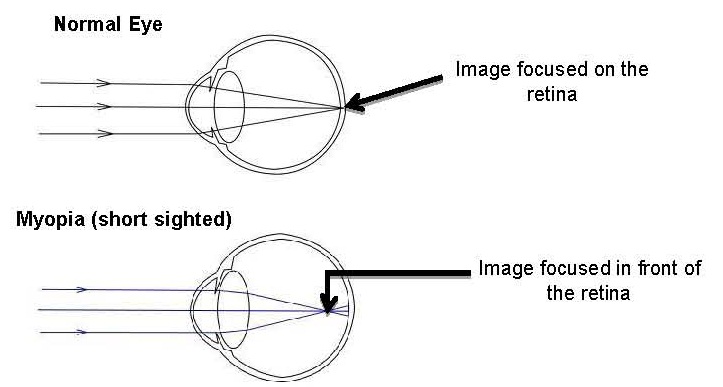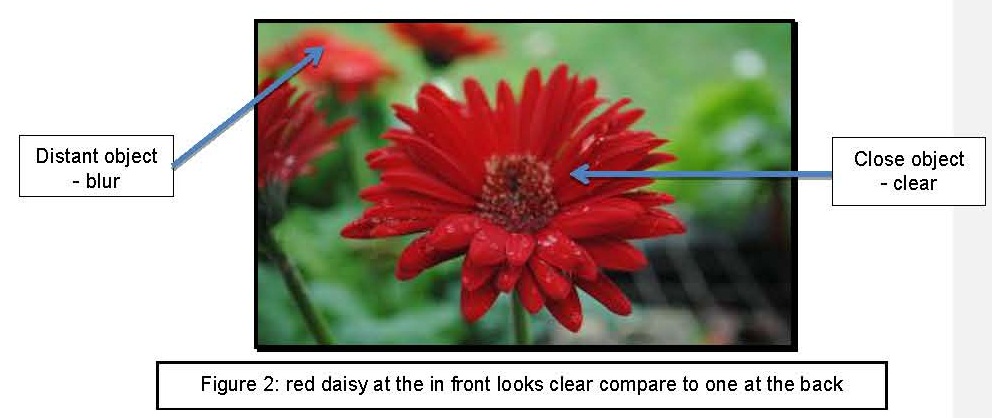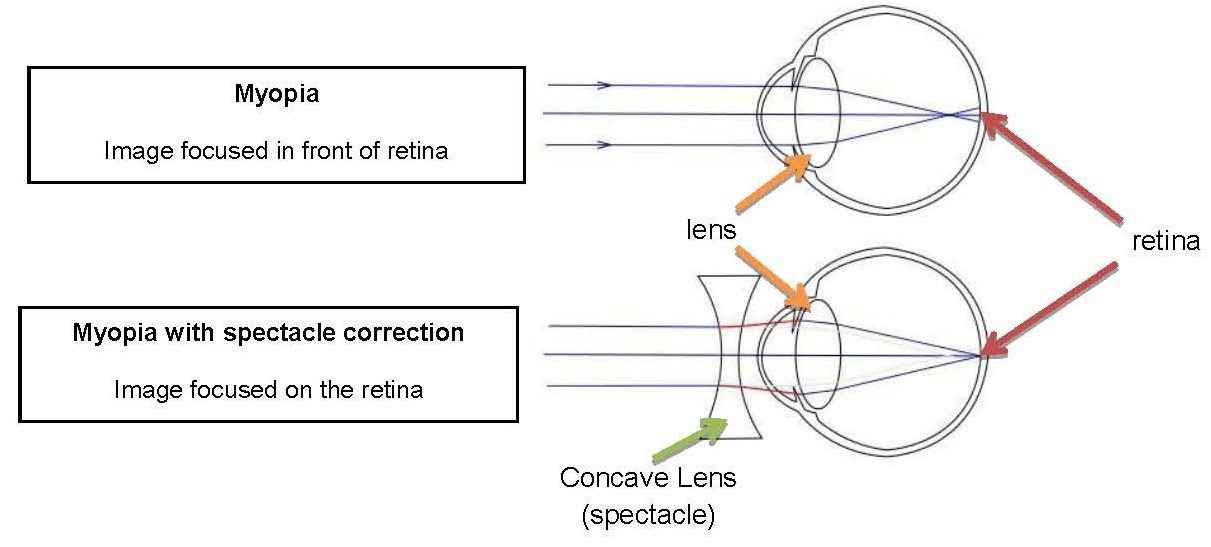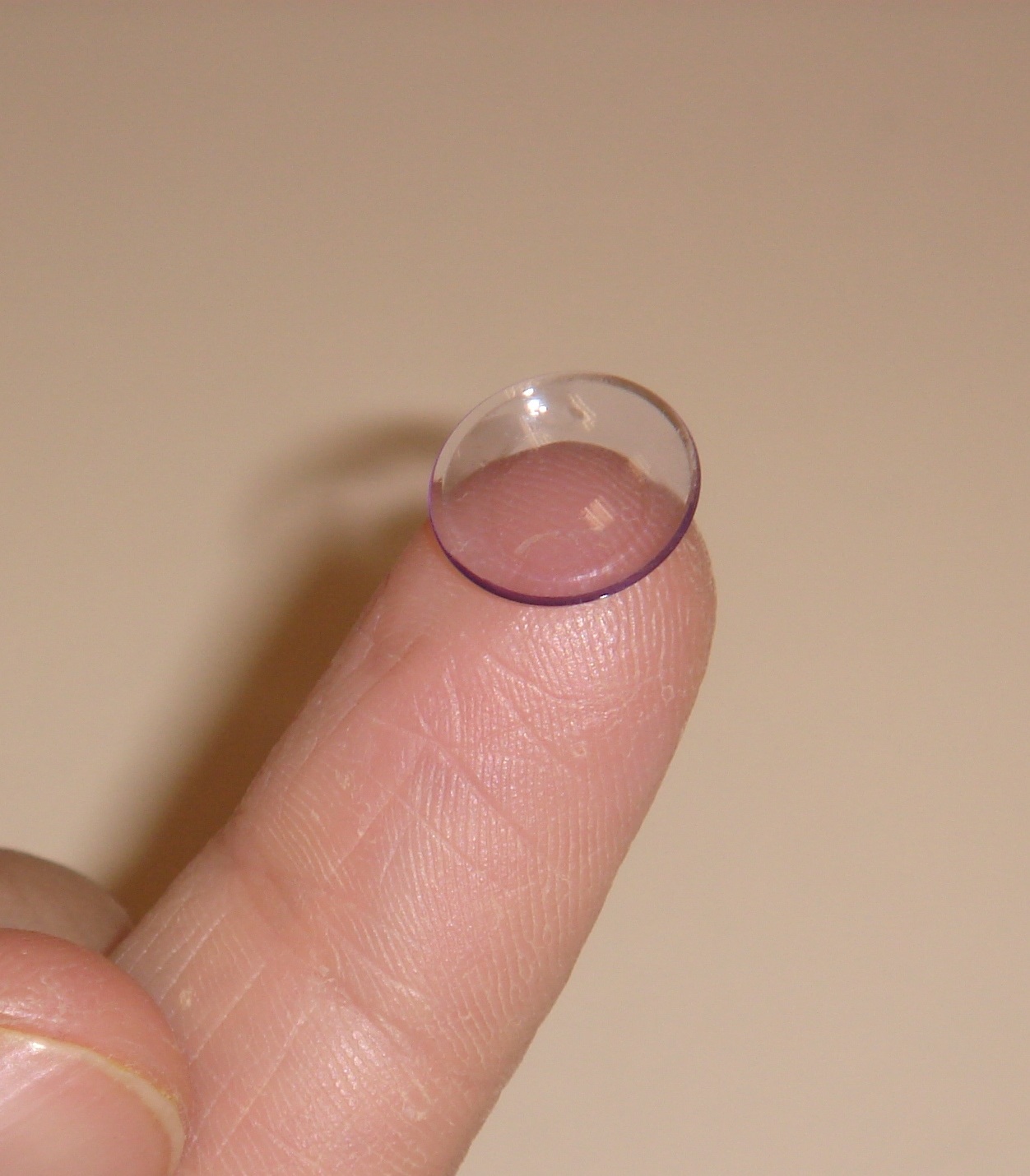Introduction
Myopia is a significant global public health concern since few decades, which were affecting 85% to 90% of young adults in some Asian countries such as Singapore and Taiwan. In a survey of school children in Malaysia, found prevalence of myopia was 42% Chinese and 15% Malay.
Definition myopia is a defect of the eye that causes light to focus in front of the retina instead of directly on it, resulting inability to see distant objects clearly. Myopia is often caused by an elongated eyeball or misshapen lens. Also called short sighted or near sightedness

Signs
1. Seeing objects clearly at close distance but blurred for object at far distance

2) School children cannot see clearly teacher’s writing on the blackboard / whiteboard
3) Watching TV at very close distance
4) Always rubbing the eyes
5) Watery eyes
6) Always squeezing eyes when seeing far distance objects
7) Reading a book at very short distance (less than 30 cm)
8) Frequent headaches
Complications
Untreated myopia will cause;
- Amblyopia / lazy eye in children
- Reduce school performance as the child can see clearly teacher’s writing in the classroom
- Low self esteem
- Jeopardized on own safety and people surround you. This could be serious especially you are driving or operating heavy equipment.
- Squeezing eyes to see objects at distant can caused eyestrain and headache.
- Affect quality of life in which you not able to perform certain task as you want and your blur vision may detract from your enjoyment of doing daily life activities.
Treatments
Myopia can be treated with;
- Spectacle


- Contact lens
Option to wear contact lens depends on cases and suitability. In certain cases, contact lens can give you a better vision compare wearing spectacles.

- Orthokeratology
Treatment in which patient has to wear special contact lens at night time / during sleep to reshape the cornea surface. Once the treatment is over, you need to wear special contact lens at night only and able to see clearly day time without any corrective lenses.
- Refractive surgery (eg: Lasik)
Surgery done by Ophthalmologist in which basically the cornea surface was reshaped in order to get rid the myopia.
Prevention
Eye examination and refraction can be done regardless of age by qualified personnel such as an Ophthalmologist and Optometrist.
Parents should bring their child to have their vision test at least once before entering school at the age of 5 or 6 years to avoid misdetection of refractive errors among children. For people with existing farsightedness glasses, eye examination including vision test should be done periodically, at least once a year.
| Good Habit
|
Bad Habit
|
|
| Illumination | Reading in good illuminations room | Reading in dim or too bright room |
| Reading period | Reading for 20 minutes and rest for a while (20 seconds) viewing distant objects (20 feet) | Reading continuously for long periods, such as 2 hours |
| Watching TV | Sitting at a distance of 3 meters from the TV | Watching TV at a closer distance (less than 2 meters) |
| Sitting posture while reading on the couch | Sitting on chair and put the book on a table | Reading while lying down or sitting on a chair but your head on the table |
| Computer usage | Distance of 50 cm from the computer screen | Too close from the computer screen |
References :
- Lin LL, Chen CJ, Hung PT, Ko LS. Nation-wide survey of myopia among schoolchildren in Taiwan, 1986. Acta Ophthalmol Suppl.1988;185:29–33.
- Wu HM, Seet B, Yap EP, et al. Does education explain ethnic differences in myopia prevalence? A population-based study of young adult males in Singapore. Optom Vis Sci. 2001;78:234–239.
- Chung KM, Mohidin N, Yeow PT, et al. Prevalence of visual disorder in Chinese schoolchildren. Optom Vis Sci 1996; 73:695-700.
- Garner LF, Mohidin N, Chung KM, et al. Sains Malaysiana 1987; 16:339-346 (in Malay).
- The American Heritage® Science Dictionary
- Copyright © 2002. Published by Houghton Mifflin
- Vitale S, Ellwein L, Cotch MF, et al. Prevalence of refractive error in the United States, 1999–2004. Arch Ophthalmol. 2008;126:1111–1119.
- http://www.mayoclinic.com/health/nearsightedness/DS00528/DSECTION=complications
- http://www.contactlenses.org/orthok.htm
- http://commons.wikimedia.org/wiki/File:Emmetropia.png
- http://commons.wikimedia.org/wiki/File:Myopia.png
| Semakan akhir | : | 18 April 2014 |
| Penulis | : | Pn. Haniza binti Suboh |







